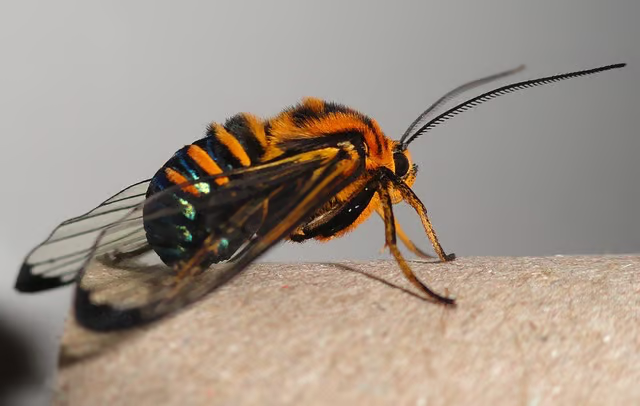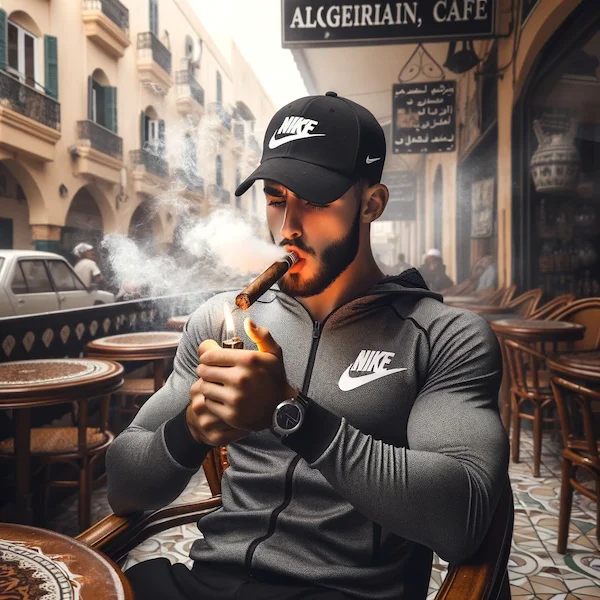Can Global Warming Cause Extinction?
Since the advent of the industrial revolution, society has experienced a paradigm shift. Humanity has seen significant advancements in technology, science, arts, philosophy, and other disciplines. From the industrial age, population statistics have begun to take a stable form, as the medical and pharmaceutical fields have experienced and are still experiencing geometric leaps.
The age of industrial advancements does come with its woes. Even though the ancient men would have seen our world as Utopia realized, there is this sense that the signs of the earth speak of impending doom for humanity. So what are the symptoms of the human specie's Ill omen? We can summarize them as the sicknesses of climate change and global warming.
The fever, chills, and weakness we feel are signs that we, as humans, are sick. Animals also have symptoms that show they are sick. Symptoms of sickness don't exclude the ecosystem of earth too. Global warming is the fever of the world.
Global warming is not a potential threat to farmlands alone. It also causes catastrophic consequences for ecosystems, habitats, and wildlife. The degree rise in temperature can trigger terrible weather events, drive up sea levels, change species' migration patterns, and even cause the extinction of various animal species.
1995 to 2006 were among the twelve warmest years since 1850, and expectations are for the average temperature rise to accelerate in the subsequent years. The Intergovernmental Panel on Climate Change (IPCC) predicts a 4-11 degree rise in Fahrenheit before the turn of the century if we don't consider a lifestyle change.
The fears these predictions bring are a lot to bear. But does this prophecy indicate the end of life itself? This article tackles these questions by focusing on how the causes of global warming can bring apocalyptic threats to the world.

Loss of Habitats and Species Migration
Due to warmer atmospheres, accelerated global warming can lead to an increase in the average precipitation patterns. This signifies that there would be more or less rain and snowfall, depending on the locale.
Recent studies have shown that global warming contributes to a significant reduction in snowpacks during the summer times and flooding during the winter. The issue is bothersome because 75 percent of the West's water supply is from these winter snowpacks according to National Geographic.
It also remains the primary water source for many regions during the dry seasons. One can only imagine the horror of losing the primary source of water.
One of the concerns that this climate issue brings to the plate is the problem of increased temperatures resulting in evaporation, decreasing the moisture of soils.
Dry soils leave the land barren, making it hard for plant life to thrive. Therefore, animal species would need to make a habitat change. Loss of trees would mean rodents and birds, animals that indicate thriving habitats, would have no choice but to leave. This is the reason for the strange phenomenon of birds migrating at odd times of the year.
For instance, researchers at the Rocky Mountain Biological Laboratory in Colorado have found that the American robin (Turdus migratorius), which migrated to the area 23 years ago, is arriving on average two weeks earlier. They explain this shift by speculating that the birds are reacting to the warmer temperatures typical of their wintering sites, which are located at lower altitudes.
Some species may not be too lucky. Owing to the loss of habitats across the globe, species are threatened with diminished living spaces and fewer food and water sources. These drastic changes can also affect a species' migration ability, as animals no longer adapt to their new environment, and temperatures may be too extreme to survive.
Species that rely on seasonal environments or specialize in one habitat may need help to relocate or find suitable areas for mating and raising young. Unfortunately, this is likely to lead to many extinctions.

Rise in Sea Levels
One of the significant concerns with global warming is rising sea levels, as melting glaciers and polar ice caps can increase ocean levels.
In addition to influencing the climate, global warming is causing sea levels worldwide to rise at an unprecedented rate due to a combination of thermal expansion of the oceans and fast melting glaciers and polar ice caps.
Scientists foresee that by the end of this century, the average sea level will experience a 7 to 23 inches rise according to the US environment protection agency. As some models suggest, it might rise by as much as 31 inches if the rate of ice melt from Greenland and Antarctica accelerates.
A 31-inch sea level rise would result in a horizontal advance of rivers, lakes, floodplains, reservoirs, and wetlands of as much as 516 feet along areas with progressively sloping shores, such as Florida.
A rise in sea level could cause the flooding of homes and render essential habitats inhabitable. Also, rising sea levels would increase the frequency of extreme weather conditions, especially in coastal environments.
This means that global warming can result in drastic environmental changes for all species. See this list of environmental crisis examples that have affected man in the past.
For example, low-lying areas could become no longer habitable for certain species. In addition, amphibians living on islands near coasts may become exposed to land predators and unable to survive.
Rising sea levels will also cause more severe floods and hurricanes, which could affect numerous species ranging from birds and mammals to aquatic creatures.

Acidification of Oceans
One of the longer-term effects of the rising earth's temperature is the acidification of oceans, which occurs when carbon dioxide from the atmosphere dissolves in seawater.
Carbon dioxide is obtained mainly from burning carbon-based fossil fuels like coal, oil, and gas in our energy plants, factories, homes, and automobile vehicles.
In February 2007, the Intergovernmental Panel on Climate Change (IPCC) released its fourth assessment of the information the body of science has gained concerning global warming. According to the report, the IPCC has found global warming to be 'unequivocal' and 'very likely due to the observed increase in anthropogenic greenhouse gas concentrations'.
Since the industrial revolution, we have seen the amount of carbon dioxide pollutants in the atmosphere rise to an unprecedented amount. Also, carbon pollution has increased to an amount we have not seen in 650,000 years and perhaps as far as 20 million years.
This means that we can adequately suspect, based on statistics, that carbon pollutants exist in the marine ecosystem.
Also, heavy downpours will destroy ecological gardens, washing the pesticides and insecticides into neighbouring streams, lakes, and coastal waters.
This can cause severe environmental changes on a big scale. It affects microorganisms, shellfish, coral reef habitats, and all species that feed on these beings.
All marine species are at risk because of the pollutants caused by man through inorganic materials and substances. Acidification has already caused mass extinctions for numerous species worldwide, leaving an impact that may take centuries to recover.
Increased Frequency and Severity of Natural Disasters
Not only can global warming lead to extinctions through ocean acidification, but it can also lead to extinctions if more frequent or severe natural disasters accompany them. For example, increased storms, floods and wildfires can devastate ecosystems and species alike.
In August 2020, massive bolts of lightning started a wildfire in California. The wildfire was termed the 'August Complex,' It burned millions of acres, destroying about 935 structures. A person died during the unfortunate event.
The 'August complex' was one of the most savage wildfires to have hit California. It was part of a series of wildfires that occurred that year.
Dry seasons in California have become hotter and longer year over year, thus making the environment more prone to wildfires.
During the Summer of 2019, Australia experienced a similar phenomenon, the 'black summer bushfire.'
We can infer from the events that as the climate becomes hotter and drier, it can damage habitats that many species rely on for survival. Therefore global warming can ultimately cause species to become extinct due to their inability to live in their environment.
Other natural disasters associated with global warming include:
- Frequency in average annual precipitation, with an increasing share of precipitation (rain and snow) falling as blizzards and flood-threatening rain.
- Higher average temperatures even in winter.
- A considerable lengthening of the frost-free season and earlier dating of a spring freeze.
- Increased frequency of extreme heat waves around the globe.
- Frequent extensive droughts and wildfires, particularly in the West, caused large-scale famine.
- Increased intensity, timing, and hazards of hurricanes.
Altered Food Sources and Competitions for Resources
The flooding from Hurricane Katrina in 2005 showed the population of New Orleans just how drastic global warming could be to plant life. Apart from displacing thousands of people, the floods destroyed the New Orleans Botanical Garden's collection. So, global warming makes gardening increasingly difficult, making food options limited.
On the other hand, prolonged drought conditions and the gradually-diminishing snowpack in many locations will substantially reduce water supplies. Significant watering restrictions have already been implemented due to the severe drought conditions that have plagued portions of the country over the previous few years, leaving behind withered lawns and gardens. With global warming, the issue of not having enough water for wildlife, agriculture, gardening, and urban consumption will only grow worse.
As global warming discourages abundant food sources, it encourages competition amongst various animal species and the thriving of dangerous plant pests like spider mites, aphids, and locusts.
Based on a study, a 5.5-degree Fahrenheit increase in temperature could mean the difference between aphids that produce 300,000 offspring versus those with more than 1 million offspring over 2 months invading plants. This is according to Sandi Doughton of the Seattle Times.
Similarly, drought-stricken plants are more vulnerable to aspergillus (Aspergillus flavus) and powdery mildew. Weeds like the dandelion also thrive in drought-stricken environments.
Therefore, global warming can cause severe extinction by altering food sources and rendering resources more scarce, thus creating competition. As the climate rises, species living in a particular environment may be forced to find new food sources or different habitats due to altered climatic conditions. With few resources available and more competition, species may not be able to survive as they compete with other organisms for scarce resources.
What Can I Do About Global Warming? (Solutions to Global Warming)
1. Use energy-efficient products
Energy efficiency is crucial in curbing the harmful effects of global warming. Energy efficiency simply means replacing household items that consume gas with renewable energy-consuming ones, e.g. utilizing solar power. Other examples of energy efficiency are changing outdoor light bulbs to fluorescent bulbs
2. Doing more planting
The Federation of National Wildlife inaugurated a plan for people to have their plantations registered. This will have the initiative recognized. This policy affects the ecosystem by increasing wildlife diversification. Not to mention the favourable implication of photosynthesis on reducing carbon emissions.
Planting increases wildlife variety, therefore having a cause on species. This, thus, causes an equilibrium in food chains and causes a healthier environment overall.
4. Encourage others in your Community
It doesn't just stop with you. Create awareness with your neighbours and advocate for wildlife protection in your community. With dedication from all, change can happen soon.

Conclusion
The leading cause of global warming has always been humans. The mechanical industry is known to produce the highest amount of dangerous waste that is detrimental to our health and the earth.
As much as ending global warming seems daunting, it's one of the easiest things we can do. Each of us can significantly contribute to the fight against global warming, the restoration and preservation of native species and habitats, and the maintenance of the plants, animals, and other unique creations our natural world offers us for present and future generations.

